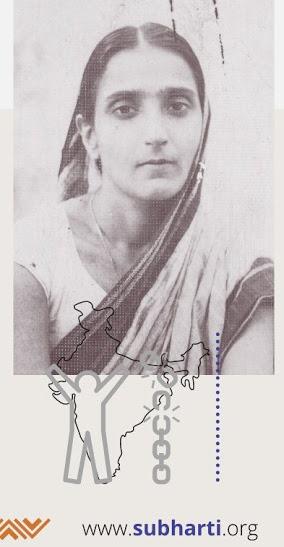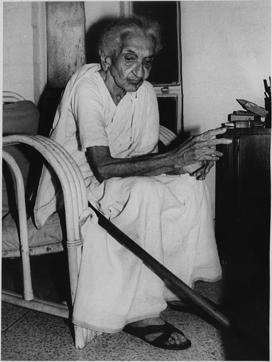In the movie ‘Indian’ – Shankar touched a raw nerve – the impact of Senapati – a devoted freedom fighter, who loses everything, incarcerated, faces adversities, lives to enforce his discipline . .. .. but when we read History – we read that India got freedom without bloodshed, the party in front, Congress participated in Round Table conferences and after freedom, occupied high posts, Ministers, Ambassadors and lived happily thereafter, ruling the Nation.
There were some against whom the British were harsh and severe, hitting and maiming them, placing them in harsh imprisonment in Andaman Cellular Jail and elsewhere while some always had the facility in their cells, treated as political prisoners, could write to their daughter and friends, could write autobiographies from Mussorie, Dehradun and Yerawada ! – books, pen, paper, bed and some facilities available in incarceration too.
~ and sadly our school Texts had no place for some who gave their lives for the Nation. .. .. good if you have read about Durgha Bhabi and Bhagwati Charan Vohra ! [I read about them only recently] – if known earlier at least would have dropped some tearsheds on 28th May for the man who was martyred 91 years ago !

Some material on web puts that in 1929 he rented room No. 69, Kashmir Building, Lahore and used it as a bomb factory. He planned and executed the 23 December 1929 bomb blast under the train of Viceroy Lord Irwin on the Delhi-Agra railway line. The viceroy escaped unhurt and Mahatma Gandhi thanked God for the narrow escape, condemning the revolutionary act through his article The Cult of Bomb.
In response to Gandhi's article, Vohra, in consultation with Azad, wrote an article entitled The Philosophy of Bomb. It appealed to youths to come forward and join them. The concluding paragraph of the article read: - There is no crime that Britain has not committed in India. Deliberate misrule has reduced us to paupers, has 'bled us white'. As a race and a people, we stand dishonoured and outraged. Do people still expect us to forget and to forgive? We shall have our revenge – a people’s righteous revenge on the tyrant. Let cowards fall back and cringe for compromise and peace. We ask not for mercy and we give no quarter. Ours is a war to the end – to Victory or Death.
The man’s wife lived longer – a very great personality, a fierce fighter, but History has failed to honor her. Durgavati Devi popularly known as 'Durga Bhabhi' (7 October 1907 – 15 October 1999) was a revolutionary and a freedom fighter. She was one of the few women revolutionaries who actively participated in armed revolution against the ruling British Raj. She is best known for having accompanied Bhagat Singh on the train journey in which he made his escape in disguise after the Saunders killing. Since she was the wife of Hindustan Socialist Republican Association (HSRA) member Bhagwati Charan Vohra, other members of HSRA referred to her as Bhabhi (elder brother's wife) and became popular as "Durga Bhabhi" in Indian revolutionary circles.
December 18, 1928 will always be remembered as a red-letter day in the history of the freedom movement since Calcutta Mail was the historic train that created a sensation in the whole country. Someone rightly said that it was easier to escape from the clutches of death but to escape from Lahore railway station was nothing short of miracle. It was a clean operation, nothing short of a coup. Every now and again Rajguru would ensure the safety of the sahib and his ‘family’. Once he came with a bottle of milk for Shashi Durga bhabhi’s babe-in-arms. At Lucknow railway station he again came with milk while Durga bhabhi gave a telegram to her husband prof Vohra in Calcutta, informing him that she was coming with her brother and he should come to Calcutta railway station to receive her.
When the train arrived in Calcutta, Prof Vohra and his sister Susheela Devi were at the station. Susheela Devi has made fool-proof arrangements in Calcutta. The first day they stayed in a hotel. Thereafter for one week they shifted to the three-storeyed building of Seth Chajju Ram. Susheela Devi had taken Sethji’s wife Mataji into confidence and told her everything about the visiting party. At Calcutta, Bhagat Singh attended the Congress Session incognito, had a glimpse of Gandhiji, Nehru and Subhas Bose. Alongwith Durga bhabhi, he met several Bengali revolutionaries such as Atul Ganguli, G.N. Das and Phinininder Gosh. He opened a branch of his party there and learnt the process of bomb-making. According to Yogesh Chander Chatterji, the plan to throw a bomb in the Central Assembly Delhi was made in Calcutta.
The woman, who transported Bhagat Singh out of Lahore – Durgavati was married to Bhagwati Charan Vohra at young age of 11. Devi came into prominence when the Sabha decided to observe the 11th anniversary of Kartar Singh Sarabha’s martyrdom on 16 November 1926 in Lahore. Devi was instrumental in helping Bhagat Singh and Shivaram Rajguru escape after the killing of J. P. Saunders. She led the funeral procession of Jatindra Nath Das from Lahore to Calcutta after his death in a 63-day jail hunger strike.
Again if we have not read the history of Jatindra - Jatindra Nath died in Lahore jail after a 63-day hunger strike. Jatindra Das was born in 1904 in a Maulika Kayastha Family at Calcutta. He joined the Anushilan Samiti, a revolutionary group in Bengal. He was a bright student and passed the Matriculation and Intermediate examinations in the First Division. He joined the Anushilan Samiti, a revolutionary group in Bengal. In November 1925, aged just 21, Das, a student at that time was arrested for his political activities and was imprisoned at the Mymensingh Central Jail. While interned there, he went on a hunger strike to protest the ill-treatment meted out to the political prisoners. After fasting for twenty days, the Jail Superintendent apologised and he gave up the fast. He was contacted by revolutionaries in other parts of India. On 14 June 1929 he was arrested for revolutionary activities and was imprisoned in Lahore jail to be tried under the supplementary Lahore Conspiracy Case. In Lahore jail, Das began a hunger strike along with other revolutionary fighters, demanding equality for Indian political prisoners with those from Europe. The conditions of Indian inhabitants of the jails was deplorable. Das's hunger strike started on 13 July 1929 and lasted 63 days. He passed away !
After Bhagat Singh surrendered himself for the 1929 Assembly bomb throwing incident, Durgawati Devi attempted to assassinate Lord Hailey; he escaped, but many of his associates died. She was caught by the police and imprisoned for three years. She had also sold her ornaments worth Rs. 3,000 to rescue Bhagat Singh and his comrades under trial. Devi, along with her husband, helped Vimal Prasad Jain, an HSRA member, in running a bomb factory named 'Himalayan Toilets' (a smokescreen to hide the agenda of making bombs) at Qutub Road, Delhi. In this factory, they handled picric acid, nitroglycerine and fulminate of mercury. Two days after killing Saunders, on 19 December 1928, Sukhdev called on Devi for help, which she agreed to do. They decided to catch the train departing from Lahore for Bathinda en route to Howrah (Calcutta) early the next morning. She posed as the wife of Bhagat Singh and put her son Sachin in his lap while Rajguru carried their luggage as their servant. Bhagat Singh, with his concealed identity, bought three tickets to Cawnpore (Kanpur) — two first-class tickets for Devi and himself and a third class one for Rajguru. Devi returned to Lahore a few days later with her infant child.
Unlike other freedom fighters, after Indian independence, Durga lived as a commoner in quiet anonymity and exclusion in Ghaziabad. She later opened a school for poor children in Lucknow. Durgawati Devi died in Ghaziabad on 15 October 1999 at the age of 92

She had no memorial, no schemes named after her, no pension, no recognition, even the school that she began with her funds was not named after her – and most of us in the Nation do not know or remember her !! A small reference to her character was seen in Rakeysh Omprakash Mehra’s 2006 film Rang De Basanti, where Soha Ali Khan played her part. The seventh episode of the 2014 Indian Epic TV anthology television series, Adrishya, is about Durgawati.
So other than INC – there were also scores of people who sacrificed everything for the Nation but do not find any mention in our history books. Here is a sad life story of another woman who fought the British, was arrested, lost her husband, ensured safe transportation of the greatest revolutionary Bhagat Singh and Rajguru and .. .. died in solicitude.
Salute to such people !
With regards – S. Sampathkumar8th June 2021.

